Land Invertebrates
Media
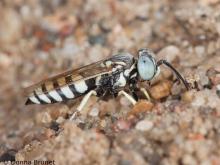
Species Types
Scientific Name
More than 1,200 species in North America north of Mexico
Description
Many species and genera of sand wasps occur in Missouri. They nest in the ground during summer. They are found in many habitats but most often in open, sandy areas along rivers.
Media
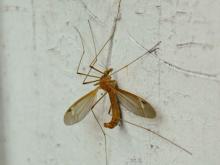
Species Types
Scientific Name
More than 500 species in North America north of Mexico
Description
Many people are frightened of crane flies, which resemble huge mosquitoes. But crane flies don’t bite or suck blood. In fact, as adults, most of them don’t have mouths at all!
Media

Species Types
Scientific Name
Nearly 200 species in North America north of Mexico
Description
Assassin bugs are usually black or brown, with an elongated head bearing a single, clawlike tube used for piercing and injecting venom into their prey. They are common in Missouri.
Media

Species Types
Scientific Name
More than 5,000 species in North America
Description
Most ichneumon wasps are harmless, although the long ovipositor of the female is intimidating. Their larvae live as parasites inside caterpillars and other larval insects.
Media
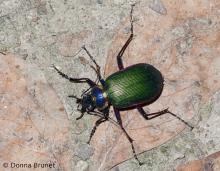
Species Types
Scientific Name
About 2,400 species in North America north of Mexico
Description
Ground beetles are a family of mostly nocturnal or light-shunning beetles that tend to be shiny black and have grooved wing covers. This group also includes tiger beetles, however, which includes many colorful daytime fliers.
Media
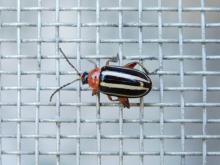
Species Types
Scientific Name
About 2,000 species in North America
Description
Leaf beetles, or chrysomelid beetles, are members of a large, diverse, often very colorful beetle family. As the name suggests, they eat leaves and other plant parts and are common on foliage.
Media
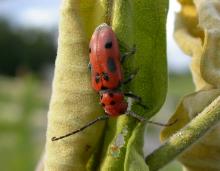
Species Types
Scientific Name
About 1,000 species in North America north of Mexico
Description
Longhorned beetles are elongated and cylindrical, with antennae that are at least half the length of the body — sometimes much longer. The larvae are grubs that bore in wood or other plants. Some are serious pests.
Media

Species Types
Scientific Name
More than 400 species in North America north of Mexico
Description
The name is a warning: blister beetles are famous for their chemical defenses. Beetles in this family can exude an oil that can cause a person’s skin to blister.
Media

Species Types
Scientific Name
Tabanus, Chrysops, and related genera
Description
Meet the horse fly: Stealthily, one will land on your back, slice your skin, and lap your blood. By the time it starts to hurt and you swat at it, the painful, itchy welt is rising.
Media
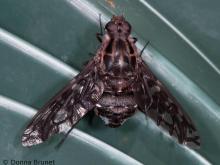
Species Types
Scientific Name
About 800 species in North America
Description
Resembling bees, or sometimes big, fuzzy mosquitoes, bee flies are a family of true flies and are not bees at all. Lacking the ability to sting, their bee mimicry helps them avoid many would-be predators.
See Also



Media

Species Types
Scientific Name
Cisseps fulvicollis
Description
The yellow-collared scape moth is more often “orange-collared.” And whether you think it looks more like a firefly or a wasp, it’s still a moth!
Media

Species Types
Scientific Name
Nearly 150 species in North America north of Mexico
Description
Slim, delicate plume moths are instantly recognizable by their T-shaped silhouette, long legs, and muted shades of tan and brown. It can be hard to separate the various species.
Media

Species Types
Scientific Name
Pyrrharctia isabella
Description
Not many people know the adult Isabella tiger moth when they see one, but we’re all acquainted with its caterpillar, the woolly worm, or woolly bear.
About Land Invertebrates in Missouri
Invertebrates are animals without backbones, including earthworms, slugs, snails, and arthropods. Arthropods—invertebrates with “jointed legs” — are a group of invertebrates that includes crayfish, shrimp, millipedes, centipedes, mites, spiders, and insects. There may be as many as 10 million species of insects alive on earth today, and they probably constitute more than 90 percent all animal species.





















